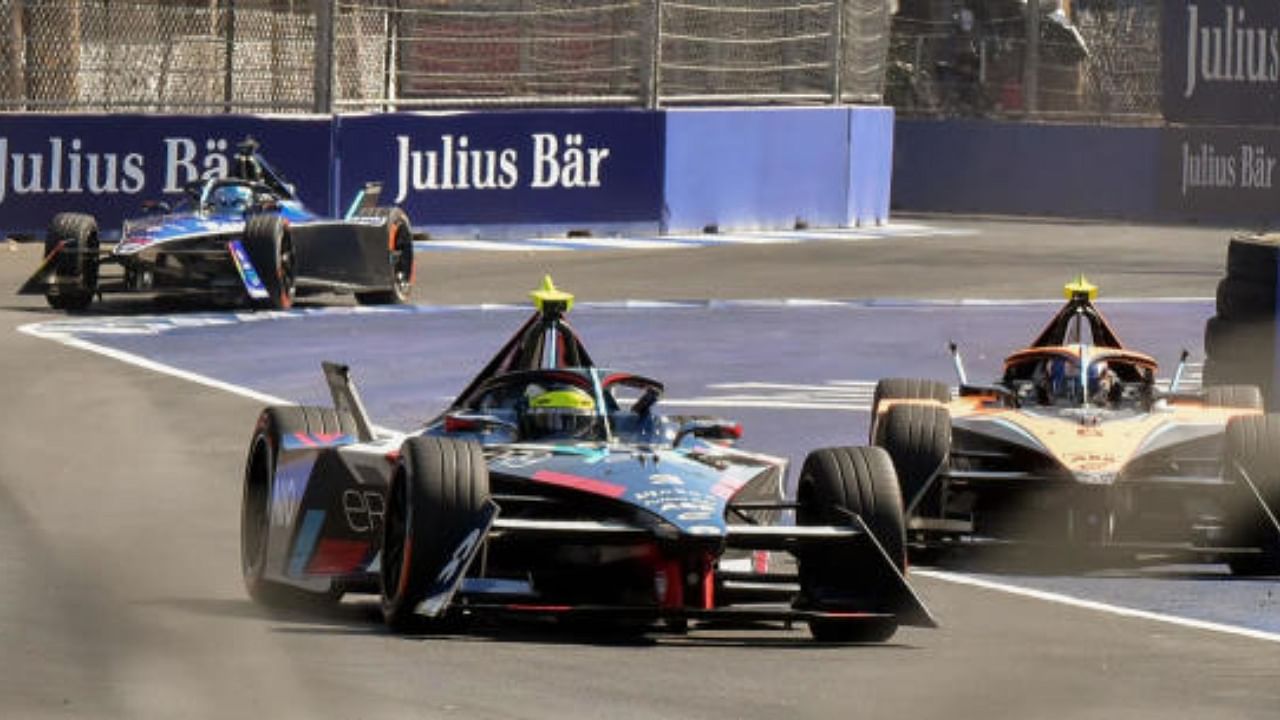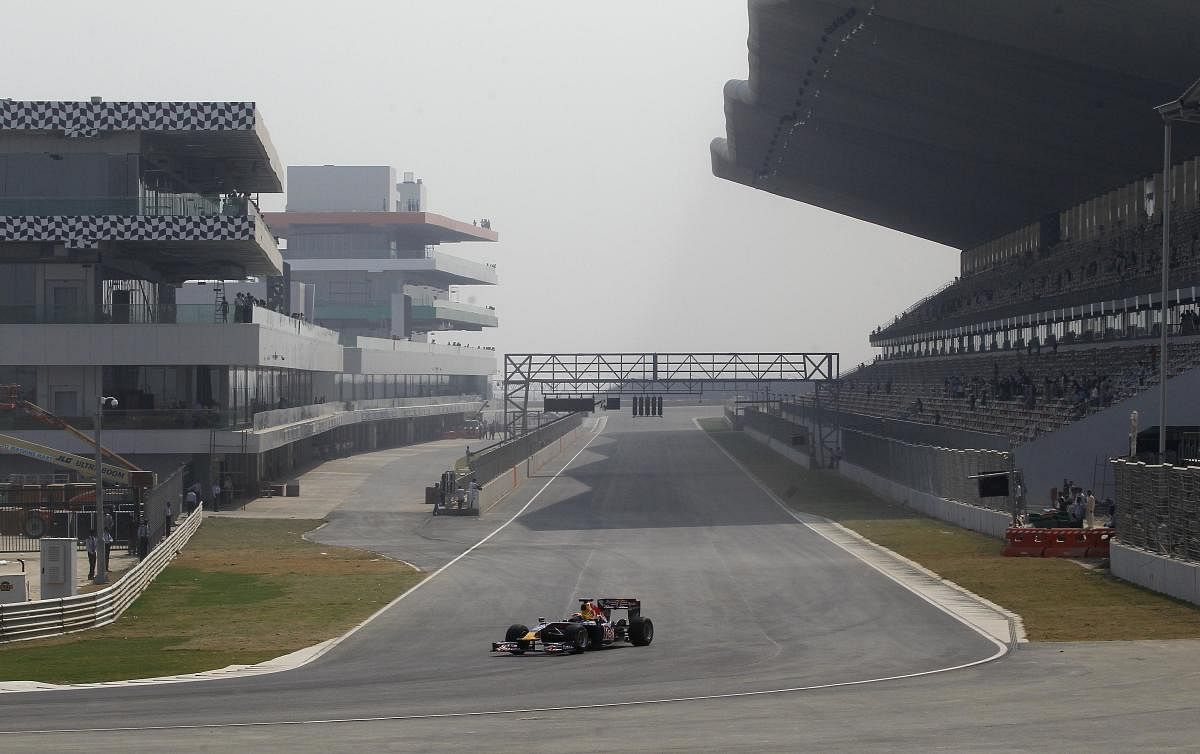

Bernie Ecclestone says, “you guys f%*$^d it up”, spindly fingers rapping familiar shoulders, and proceeds to walk. He is missing a cape but looks like he is out to save the world - one Grand Prix at a time - in his white shirt and blue jeans.
Ecclestone is used to being in control. He didn’t have his wits about him that day, and so, when he caught sight of a couple of familiar Indian faces hovering in the paddock of the Buddh International Circuit (BIC) in Greater Noida, he couldn’t resist the urge spit out his frustration.
Anger and resignation morphed into a grotesque smile on the octogenarian’s face.
The day of that unsettling encounter with the Formula One supremo would become the last time India would experience Formula One: October 27, 2013.
It would be a few months before Ecclestone’s tormented expression and expletive-laden morning at the Indian Grand Prix (IGP) would make sense to anyone, especially to the two naive recipients of Ecclestone’s confusing message.
Formula One was done with bureaucratic hurdles, tax issues, and a general lack of professionalism in India. Thus, Ecclestone left, and took F1 with him, but left the elephant in the room as a reminder of that ‘mistake’.
Ecclestone would pop in every once in a while and claim the IGP was going to return, but that futile ritual would lose credibility eventually, and by the time Liberty Group took over, abbreviations such as ‘IGP’ and ‘BIC’ had already become part of an ancient lexicon on these shores.
It has been a decade since the infamous exodus, and BIC now houses vultures on weekdays and some races on the weekend - what a fall from grace for what was once a theatre of racing dreams and economic opportunity.
But a month ago, while hanging about at the inaugural Formula E race in Hyderabad, Federation Internationale de l’Automobile (FIA) president Ben Sulayem said: “In my manifesto, I mentioned how important India is. Not because I am here, not because I am the president. India and China both have the manufacturers, both have the numbers. We have not scratched the surface yet. We need to grow but how do we grow? There is no one size that fits all. India is different so we have to listen to people here.”
“Of course, it (IGP) can come back, the opportunity is there and I have to break these barriers to ensure it happens,” he added.
Sulayem’s self-promoting statement is about as non-committal as Ecclestone’s fickle sentiment of all those years ago, but the dynamic is different now. India has already hosted a Formula E race and will host the first edition of the Moto GP at the BIC in September.
Also, the nation at large has grown to appreciate the nuances of the sport in the wake of ‘Drive To Survive’ - a Netflix documentary on F1. None of this is to say F1 will return to India, but…
“On a quarterly basis I have people who run F1 asking me about returning to India,” says Karun Chandhok, the former Indian F1 driver. “They want to because they understand the scope of this market. They know that it can be very beneficial to them and to the country. But frankly, no one here is jumping out of the woodwork to host them. They all speak a big game, but no one is willing to put money where their mouth is. Jaypee Group was the only one who did.”
Jaypee Group spent over half a billion dollars on building the BIC and paid close to $50 million annually to F1 to run the race for three editions. In return, they filed for bankruptcy a few years after the last race.
Unlike F1, however, Formula E found a promoter in Greenko and is backed by the Telangana government. Moto GP has found an Indian promoter in Fairstreet Sports, and although there is no government backing for the two-wheeler event, Dorna and Fairstreet Sports signed a seven-year Memorandum of Understanding (MoU).
“See, Formula-E is in start-up mode so they need new countries to increase their viewership, and so they are able to strike affordable deals because they are in the process of expansion,” explains Chandhok.
“The same with Moto GP because since Valentino Rossi retired their viewership numbers have plummeted so they don’t have a choice but to enter new markets to get the interest back. They are not in a great position to negotiate deals.”
As for F1, there is no need to push the panic button and rush to deals in India when the calendar is already packed with 23 races, but the driver-turned-commentator nevertheless spelt out the conditions which would be conducive for their return.
“Every country in the world, save for a couple of them, underwrite races (drop costs via reduced tax). In most cases, the government is involved with the promoters to ensure the races are run without any issues,” he notes. “In order for F1 to return, a progressive government, like the one in Telangana, will need to step up.”
KTR (KT Rama Rao) - the Minister for Municipal Administration & Urban Development, Industries & Commerce, and Information Technology of Telangana - and his likes, Chandhok says, will need to call upon industries and leading industrialists in their respective states to put up the money for it. And that, he insists, is the only way India’s F1 itch will be scratched.
But, in all this the most obvious question arises, why does India need F1?
“Last year, 17000 people travelled from India to the race in Singapore. The basic price of rooms was $400 and then there’s eating out, shopping and much more, and all this money goes to the local economy,” he says. “Europeans, for example, don’t see the sun for the most part so when the Singapore race is scheduled, they book their tickets well in advance and they book Singapore Airlines, which is a government-run airline, and fly down. In all, there is a lot of revenue for the state.
“If you look at this season, every single race is sold out at whatever price. For instance, every room in Las Vegas is priced at $900 a night, and this is a small motel, every single room in the city is booked out. This is what should have happened in India: the government should have teamed up with the promoters and offered package deals to people coming for the weekend. Taj Mahal, Jaipur, Udaipur, and then the race… it’s all on one straight stretch of the road really.”
“Our government did not understand the power of F1 and they missed out on the opportunity,” he adds.
Sulayem’s optimism, the rate at which the automobile industry is growing, the unabated trend of investors eyeing the next big thing, and the spike in motor sport events at the local and international levels mean the conditions are ripe. Does anyone want the fruit bad enough though?